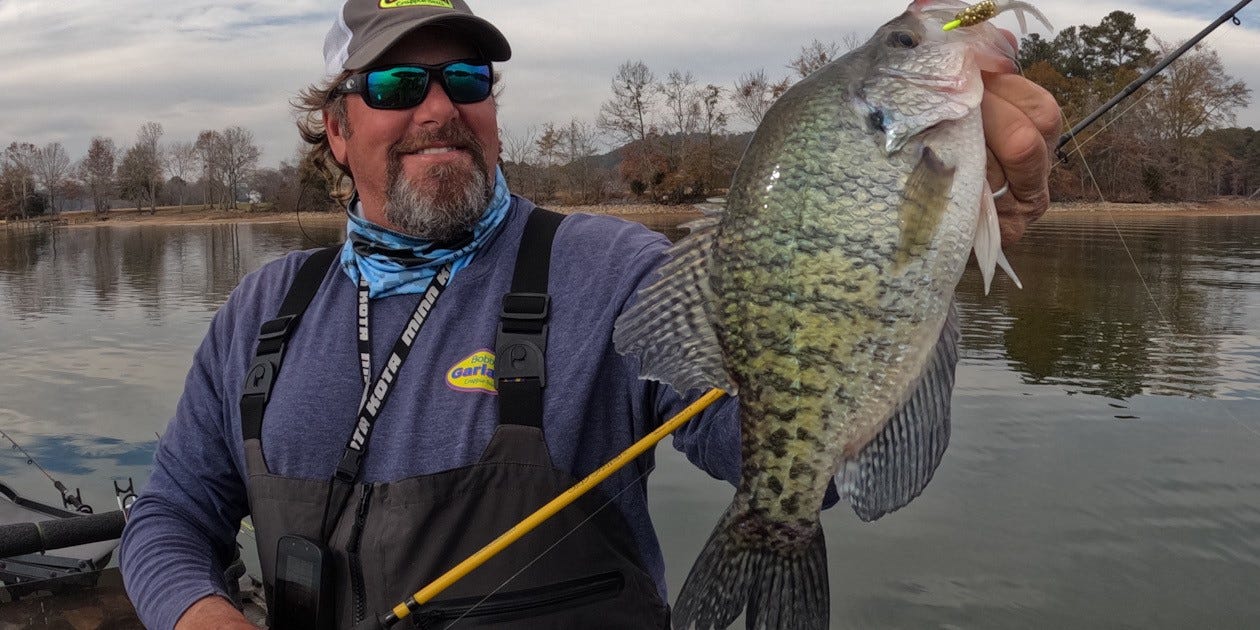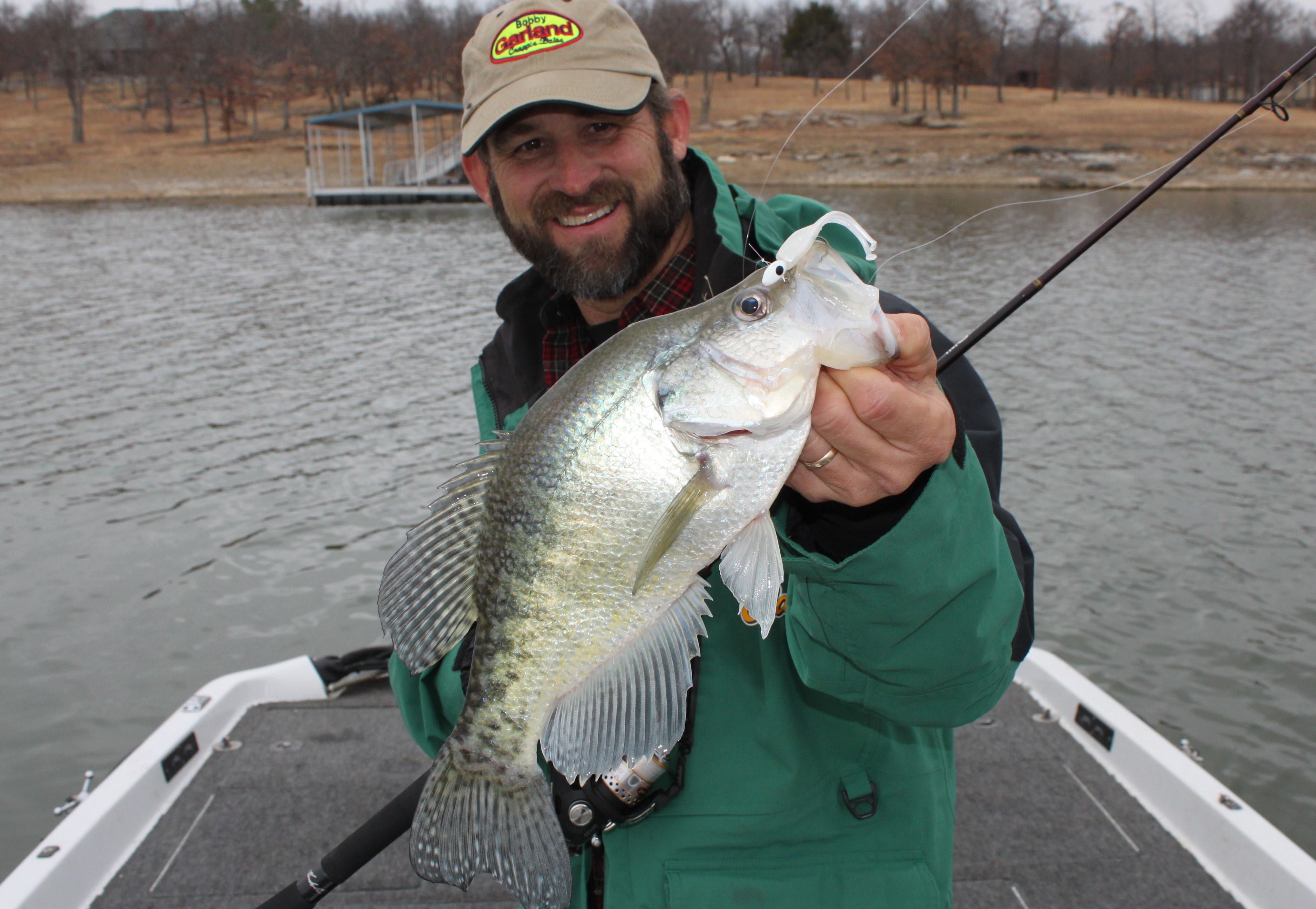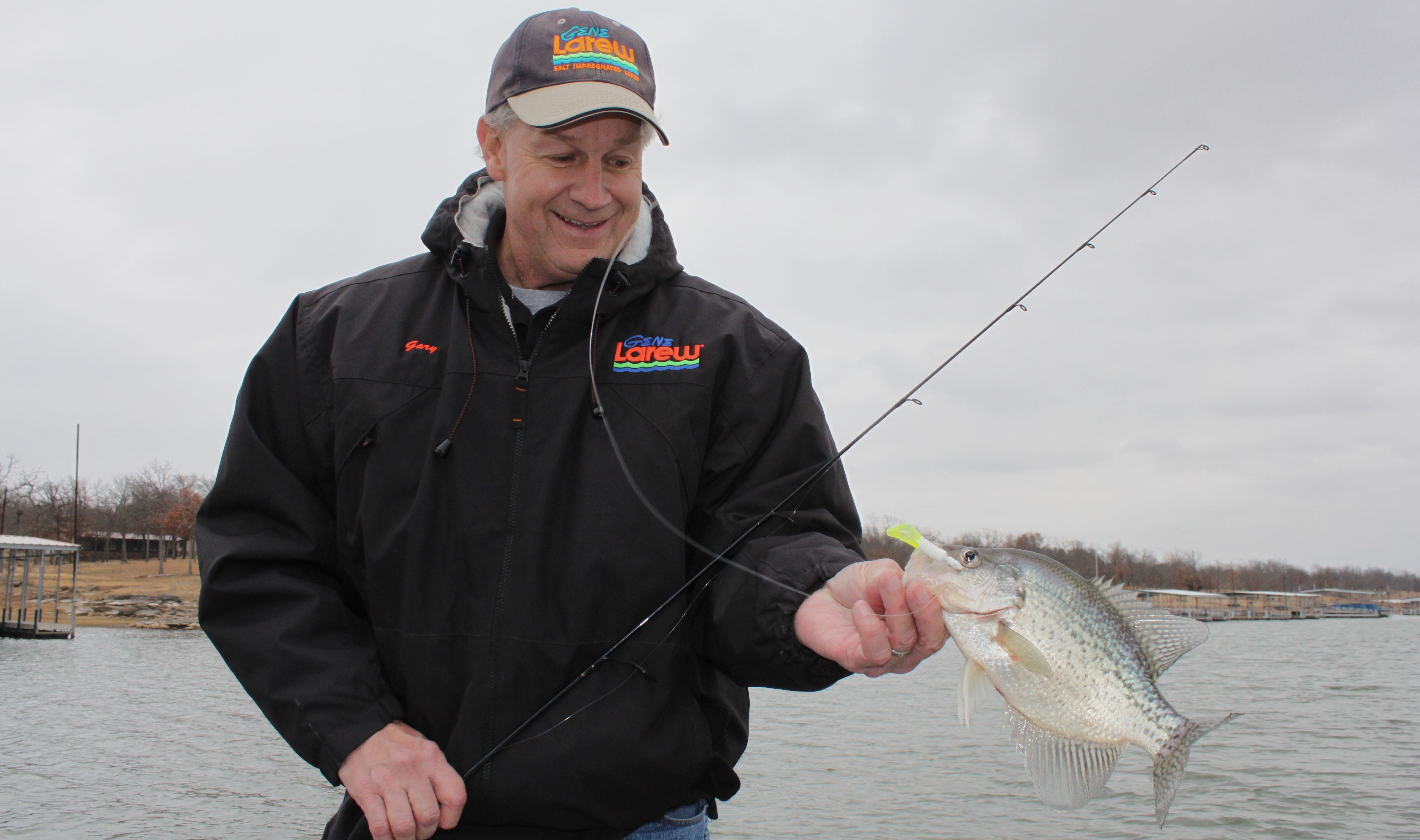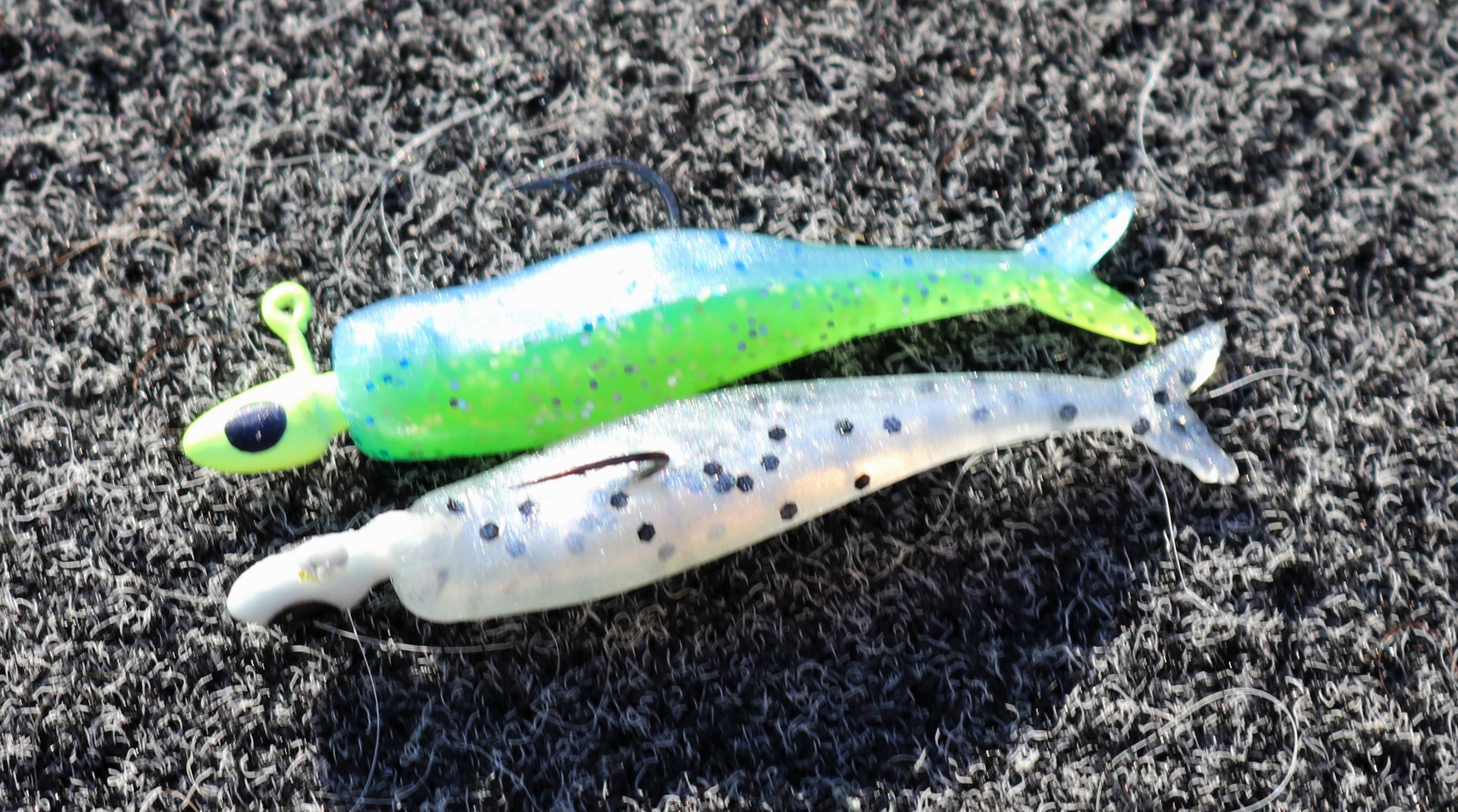- Dec 18, 2023
Find Hot Crappie Fishing in Cold Weather
Good crappie fishing can be found all winter, but it’s important to adjust to the season. These tips will help you continue to catch crappie all winter.


If you put away your crappie fishing gear when the weather gets cold, you’re missing great fish-catching opportunities. If you continue fishing but make no changes in your approach, you’re still missing opportunities, and you might find yourself wishing you had put away your gear.
However, if you consider the season’s impacts on crappie and their forage and plan your strategies accordingly, winter can be an outstanding time to catch good numbers of crappie, with strong big-fish potential and with less competition from other anglers than typically is the case.
We’ll examine important practical considerations, adjustments, and strategies that can help you catch more crappie this winter.
Degrees of Difference


During winter, when the water is cold overall, any area where the water is just a couple of degrees warmer than other parts of the same body of water often will hold more crappie and, more importantly, more active crappie.
If you’re fishing from a boat with modern electronics, watch your temperature gauge as you check out different areas. If you’re bank fishing or fishing a smaller craft with no electronics or reduced mobility, simply accounting for areas that “should” be warmer as you make plans is a valuable first step.
If the sun is shining brightly, consider its warming influence, especially during afternoons, keeping in mind that shallow flats warm faster than deeper areas, especially if they are in bays or pockets that are somewhat separate from the main body. Other influences for faster sun warming include stained or even dirty water, riprap banks and a southern exposure.
Flowing creeks and rivers that feed lakes are often warmer than the main body during winter. Pay extra close attention to small drains after a major warm rain. Inflows are a bit of a wildcard because they also can be cooler, but during winter they usually deliver water that’s at least a little less cold than the main lake and therefore create a moderated zone.
Of course, the most dependable “hotspots,” if a lake happens to have one and public access is available in the area, are waters near warm-water discharges from power plants. Related to these, it’s worth noting that the area influenced by such a discharge is often substantial, and most anglers only fish in the immediate outflow.
Best Timing


The best time to go crappie fishing is whenever you can go. That truth acknowledged, if you have options, afternoons tend to be better than mornings this time of year. The reason for that is simple: Days are warmer than nights. The water tends to cool overnight and warm through the day. Morning temps are the coolest, and late afternoon temps are warmest, which typically equates with the most fish activity often happening late in the day. Even toward evening, when the air temperature starts dropping again, water temperatures remain at their warmest point.
Again, related to slower changes of water temperature, if there is a warming trend, each day of warmer weather tends to be better than the one before. If its trends warmer for a few days, by the third day, the baitfish and the crappie will have moved shallow, and their behavior should be pretty springlike.
When winter fronts push through, the period right before the front and even as it begins to push through, while the air pressure remains low, often produce fast fishing action. Once the skies clear, the temperature drops, and the wind starts blowing, things tend to get tough for a couple of days.
More Location Influences


Conditions change quickly during winter. Because baitfish and crappie tend to stray shallower with warming trends and drop deeper during cold snaps, areas that provide easy access to a range of depth are often best this time of year.
Types of areas that provide crappie with a nice range of depths include a flat that stretches out to a well-defined channel and a point that connects good shallow cover with a channel. Underwater roadbeds and ridges provide similar benefit and are often overlooked by crappie anglers.
Bridges with causeway that span the lower ends of major creeks or main bodies of lakes provide similar benefits, with the riprap along the causeway providing great shallow habitat and the channel cutting beneath the bridge.
Also, don’t overlook the significance of shad for influencing crappie locations during winter. If shad are plentiful on a flat, there doesn’t necessarily need to brush or other cover present for that flat to hold crappie.
Shad reveal a couple of different things for finding fish during winter. Most obviously, they reveal areas the crappie are apt to be using. As significantly, they help you determine the right depth range. If shad are up on a flat and dimpling the surface, the crappie are apt to be in the top 5 or 6 feet of the water column. If most of the shad you mark are, say, 6 to 8 feet deep, the crappie are likely to be holding 8 to 10 feet deep. Crappie feed up, so they tend to position themselves just beneath the fish.
Winter Strategies
Veteran Alabama crappie guide Lee Pitts often turns to a float & fly during winter. This approach allows him to make slow and subtle presentations to crappie that suspend in creeks when the water is cold. Click the video above for the details of Pitts’ F&F approach.
Floats are also beneficial for working from the bank because you can dramatically slow jig presentations but keep your bait at a prescribed depth. It’s a good idea to have both set floats and slip floats available. A set float is simplest to rig and provides a bit more control for presenting a jig, but a slip float allows you to work deeper and still be able to cast the rig effectively.
From a boat, long-line trolling with a Bobby Garland Hyper Grub or Stroll’R is an excellent winter approach because it allow you to cover water to find fish and to control the depth. Long-line trolling also provides the very steady movement that often works best when fish are winter chilled. Whether you put out several lines or only a couple, mix things up in terms of color and depths (with depth determined by jighead weight and the amount of line out), and pay attention to any preferences the crappie show.
If you have live sonar on your boat, winter is also a great time to search out big roamers or schools and cast or pitch to them. An important aspect this time of year is to minimize added action from rod movements. If there’s any common lesson from anglers who have fished a lot with live sonar, it’s that less added action is typically better. That becomes even more so when the water is cold, and baitfish do minimal racing and darting.
3 Great Winter Baits


Live Roam’R – The new 1.75-inch Bobby Garland Live Roam’R is a highly natural, small-profile baitfish imitation that can be rigged upright or turned 90 degrees and rigged flat to change the profile and action. The natural shape and subtle action make it ideal for winter fishing.
Itty Bit Swim’R – Bobby Garland’s Itty Bit series takes small to another level, which can be valuable some winter days. The Itty Bit Swim’R has the same shape and subtle tail action as the Baby Shad Swim’R, but in a 1.25-inch bait that even negative mood fish have a tough time resisting.
Minnow Mind’R – At the other end of the spectrum, the Minnow Mind’R is a fairly large crappie bait for those fish that want to make every feeding effort worthwhile. It has a subtle wavering action – and despite having been designed to couple with live bait, is spectacular fished on a jighead, with no minnow to mind.



